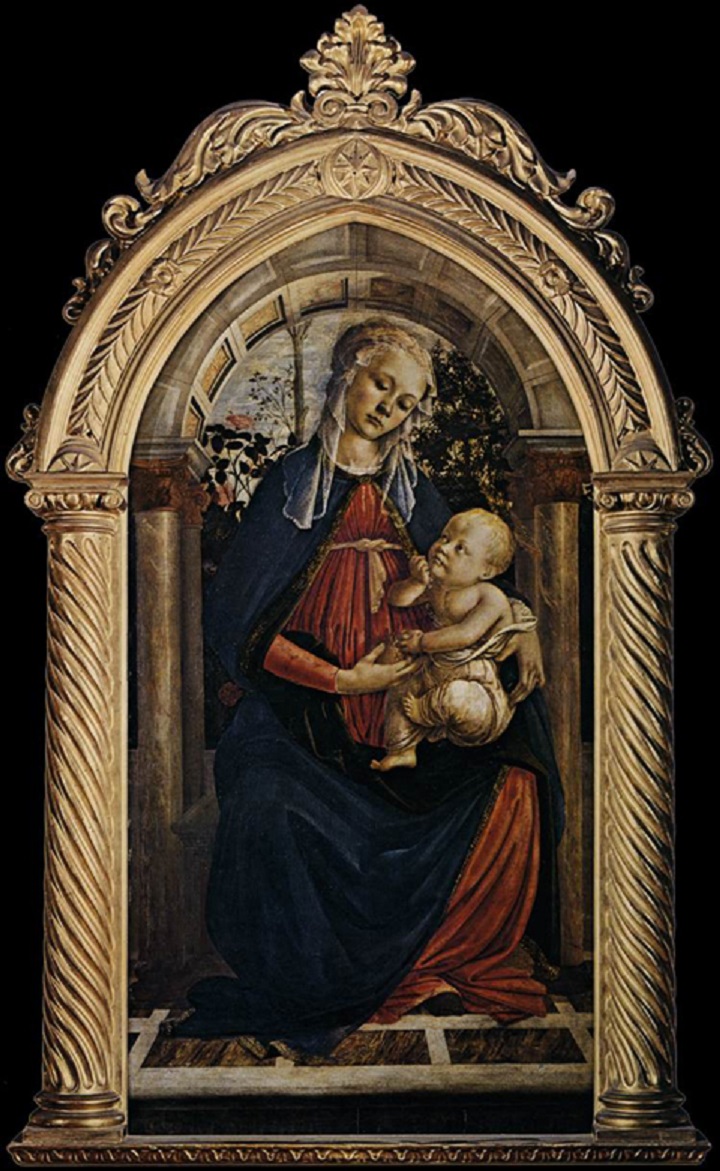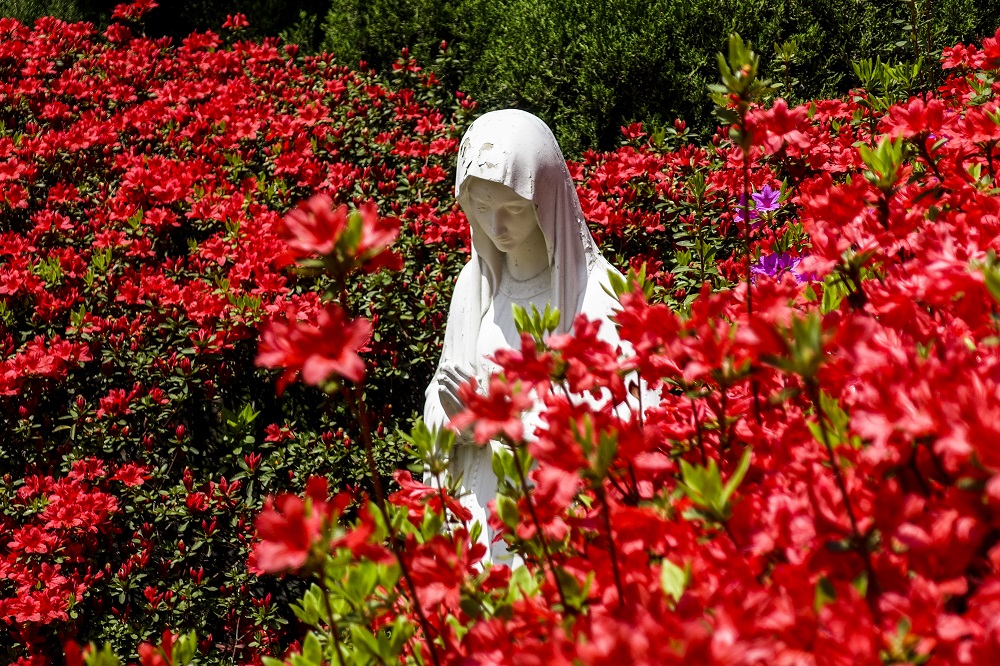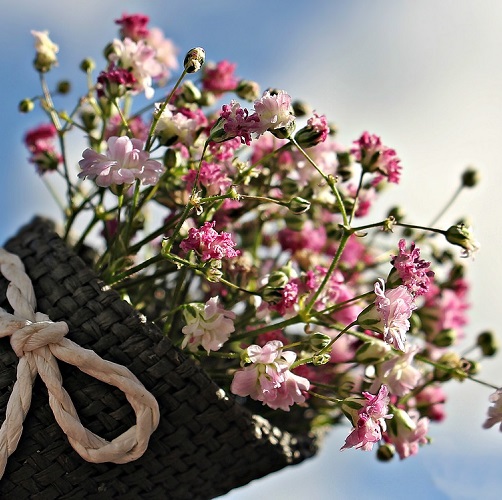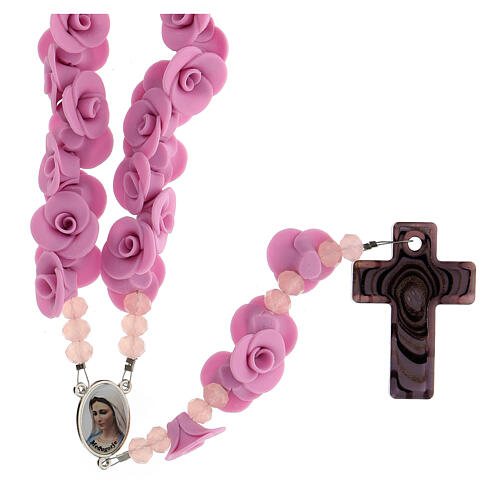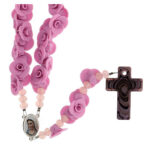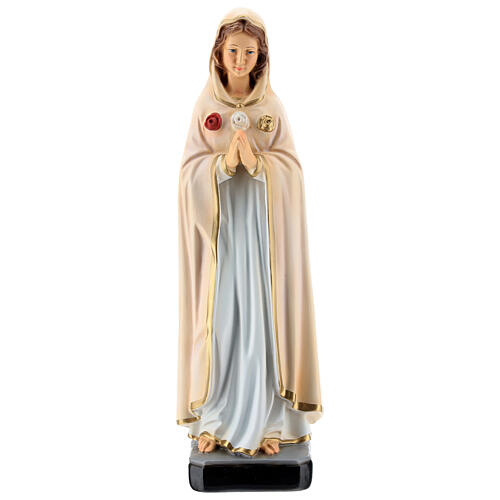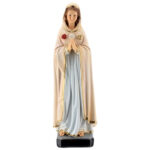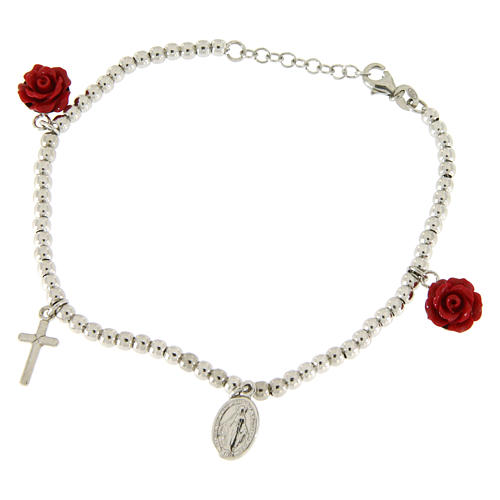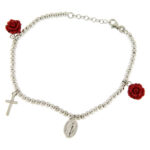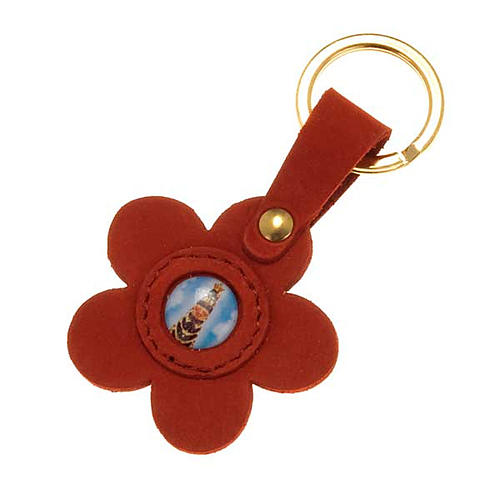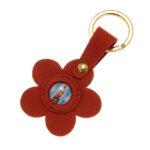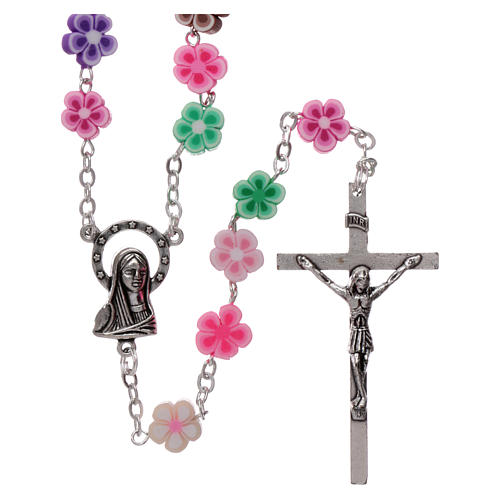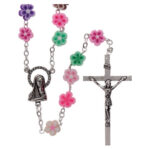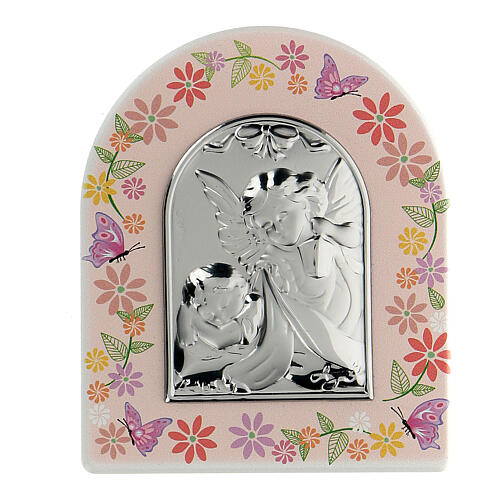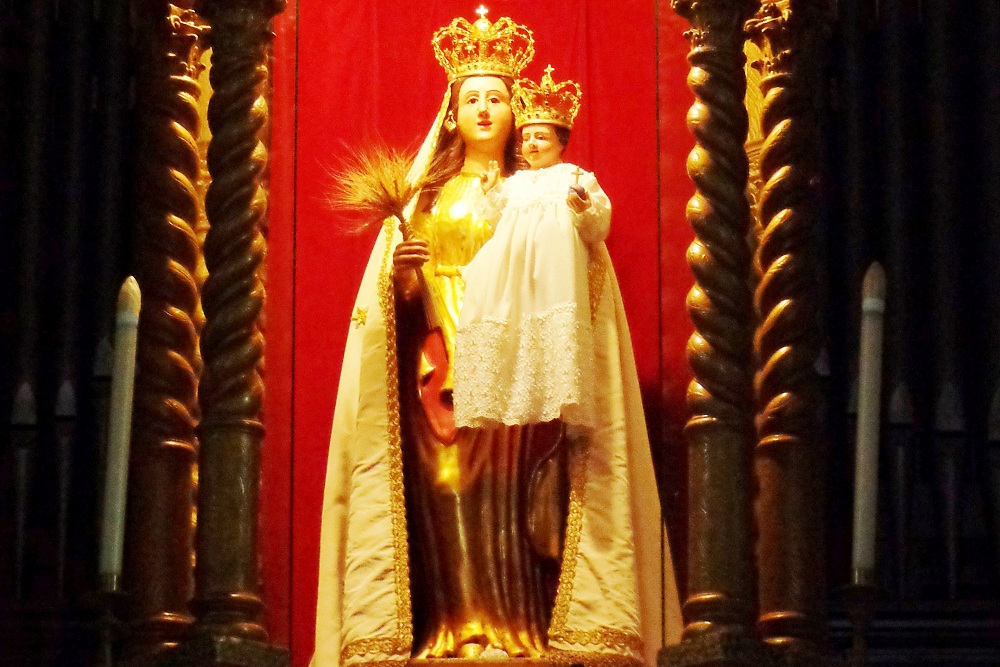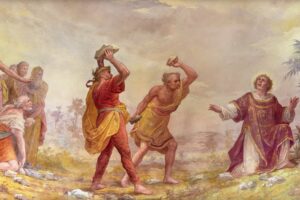The theme of the rose symbol of Mary is recurrent in art. Here are the most famous works depicting the Madonna del Roseto and the meaning of this flower associated with Mary.
Contents
The arrival of summer is a time of rebirth and fertility. May, the spring month par excellence, is dedicated to Our Lady and is the month in which Mother’s Day is celebrated, in Italy and other countries. Flowers are the great protagonists of the spring season: their scent and beauty have always been interpreted, in art and culture, with meanings and used as attributes for people or concepts.

How to make a sacrifice to the Madonna
A sacrifice to Our Lady, a small sign of devotion to show great love. But how to make one enjoyable?
In particular, the rose is often associated with love, for its intense colours and scents, purity and beauty. The rose is the flower of Mary, appeared and defined as “Mystical Rose“: Mary is the Queen of Saints as the rose is the “queen” of flowers.
The roses: symbol of Mary
The link between the Madonna and the roses, in art, has been present since ancient times. In several works, Mary is depicted in a rose garden or with a rose in her hand. The rosary itself, the prayer par excellence dedicated to Mary, takes up the image of the rose. Every Hail Mary recited in the rosary is like a rose offered to the Mother of God, and the complete rosary is like a beautiful rose garden. Sometimes, to emphasize this similarity, rosaries are flavoured with the scent of a rose or other flowers.
The Madonna del Roseto: the most famous works
The Madonna portrayed inside a rose garden is the subject of works by different artists. The two most famous are the Madonna of the Rose Garden of Stephan Lochner and that of Martin Schongauer, well known in the countries of Nordic tradition.
The first is a tempera and gold paint on the panel dated 1440-42. It is also called Madonna del Pergolato di Rose. In the painting we see Mary, who carries Jesus in her arms, sitting in a lush garden, surrounded by angels. Behind it is a pergola on which grow a large number of white roses (representing innocence and purity) and red (reminiscent of the colour of the blood of passion), along with lilies, daisies, strawberries, and acanthus.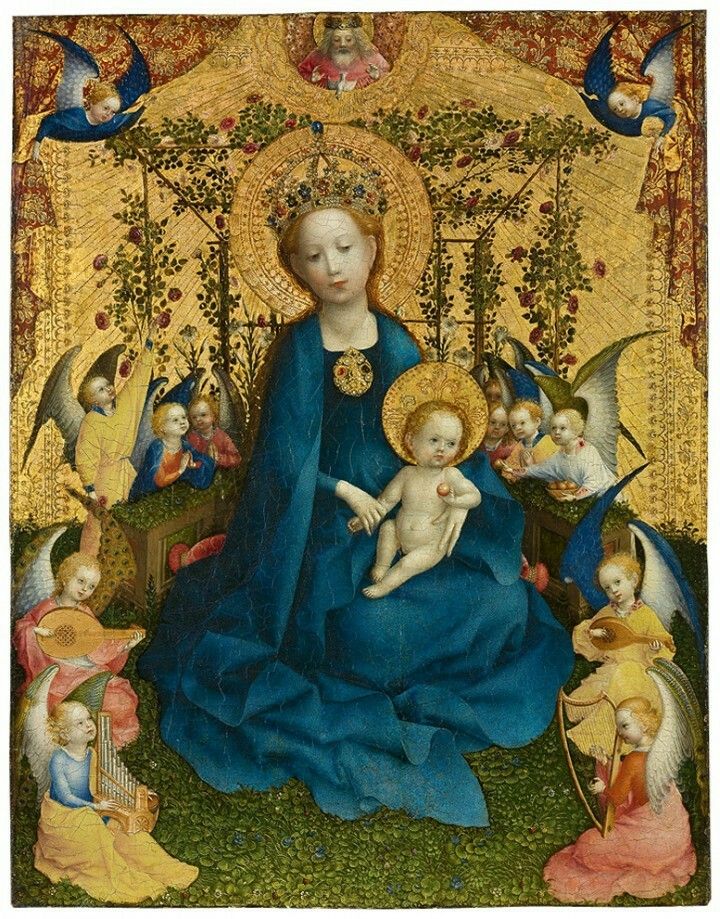
The Madonna del Roseto by Martin Schongauer is an altarpiece, preserved in Colmar in the church of San Martino, dated 1473. It is considered the most important work of the artist and is recognizable for the incredibly detailed flowers and birds, the red robe of Mary and the absorbed gaze of the Virgin. The Madonna holds Jesus in her arms and is also in this case immersed in a garden of roses and lush plants. The pergola is dotted with birds that make the image lively, while two flying angels hold a crown on Mary’s head.
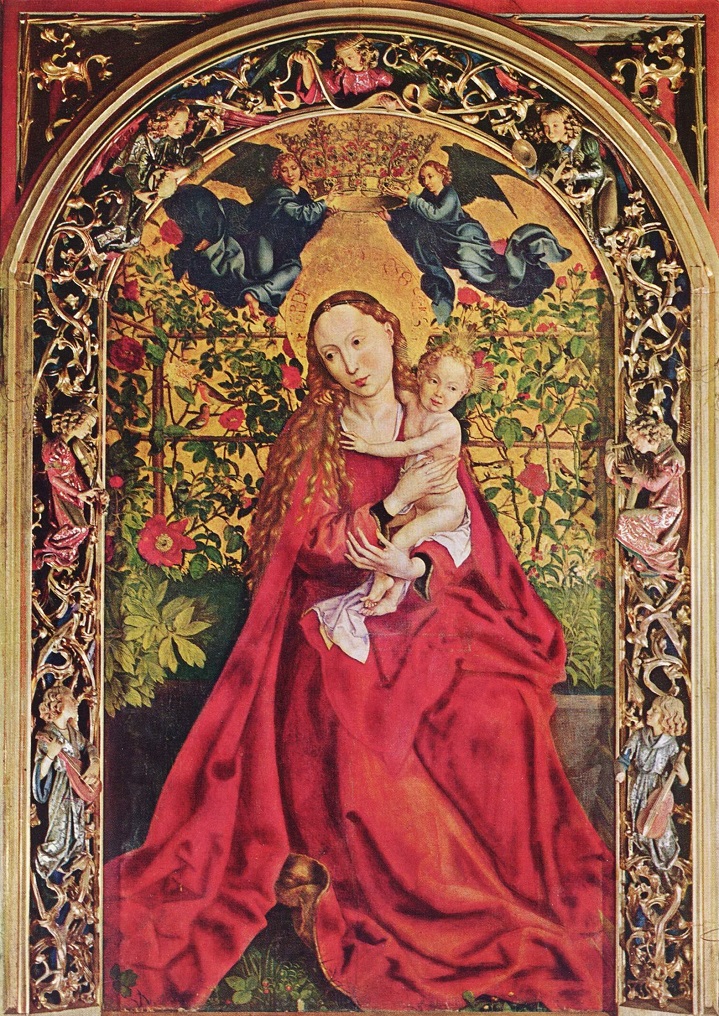
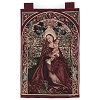
Other representations of Madonna del Roseto
There are many other artists who have taken up the theme of roses and flowers in their works dedicated to Mary. In The Virgin at the Fountain by Van Eyck, a famous Flemish painter, Mary stands near a fountain: behind her, the angels hold a tapestry and in the background, there is a hedge of roses.
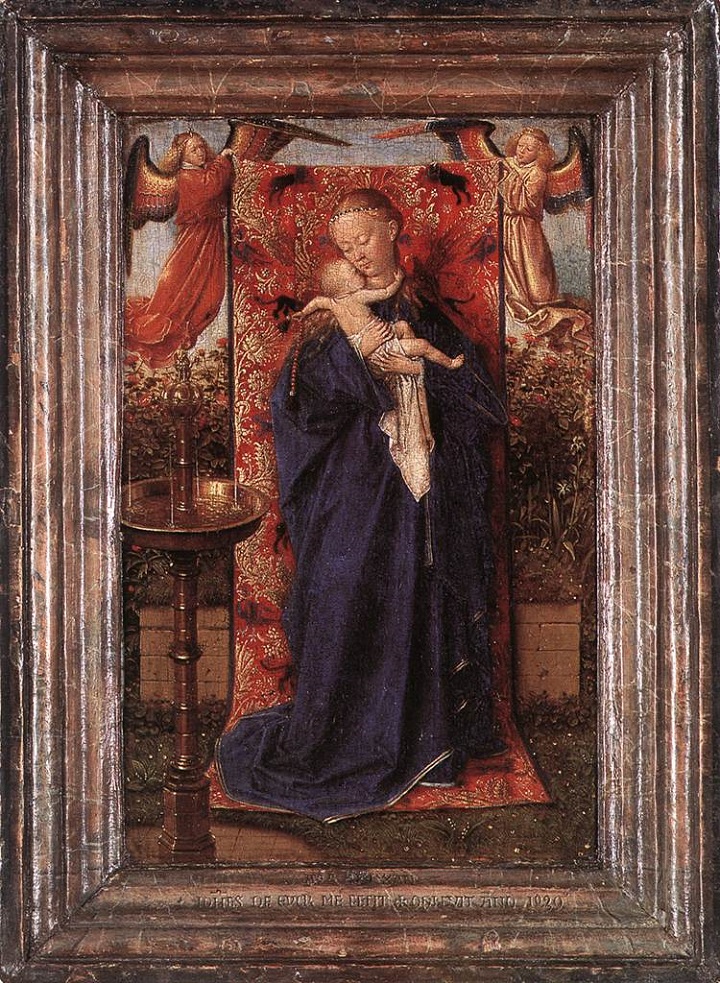
In the composition of the Madonna del Roseto by Stefano da Verona, Mary and the Child are surrounded by the flowers and leaves of a flower garden. A rose is portrayed as if it had fallen on the blue mantle of the Madonna, light and fragrant. Around the angels and nature rejoice in the presence of the Virgin.
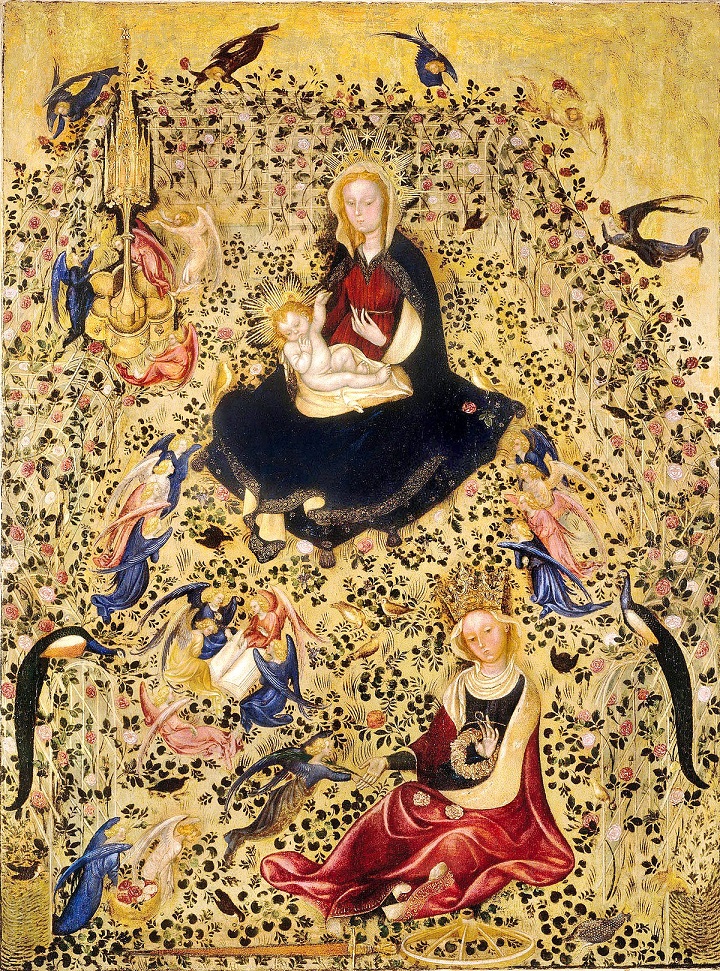
The oil painting of the Madonna del Roseto by Bernardino Luini instead offers a gentle and delicate scene: Mary is half-portrayed and the Child has his gaze turned to the viewer. Behind them, the leaves of the rose garden are dark and create a uniform background that enhances the effect of the shading and the soft light on the subjects. Three white roses come off the bottom around the figure of Mary.
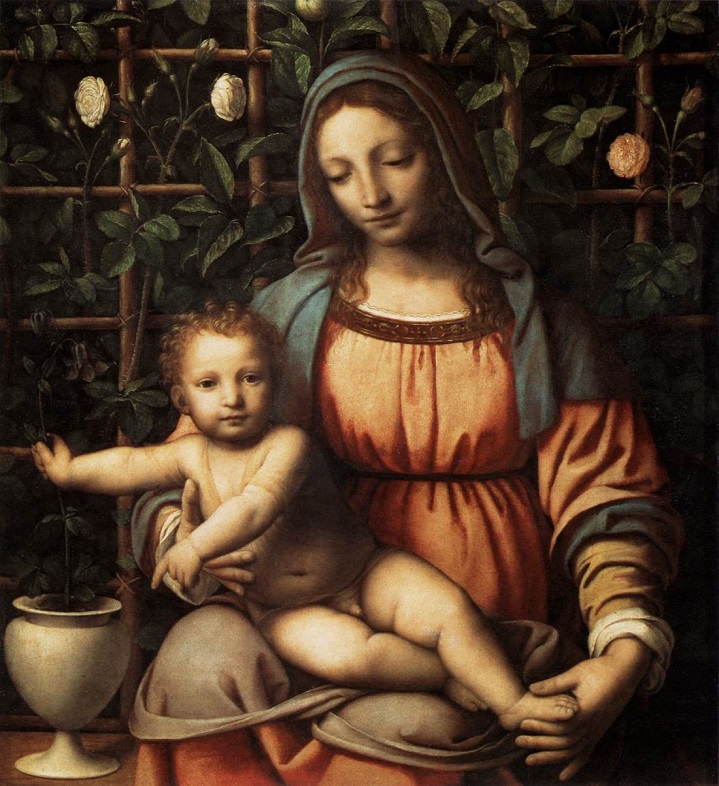
Finally, the great Sandro Botticelli also made a painting of the Madonna del Roseto. Mary, with a thoughtful attitude, holds the Child in her arms, lively and attentive; the figures are highlighted by the technique of chiaroscuro. Behind the Virgin, there is a garden of flowering roses.
